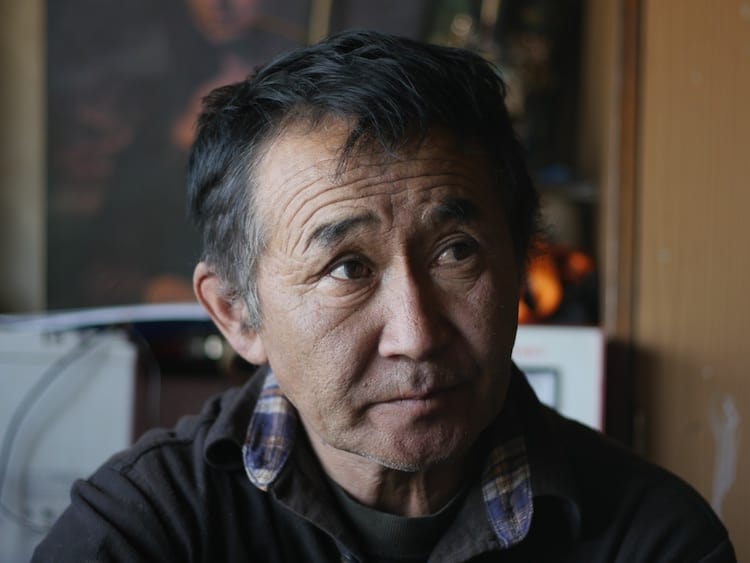
To find out about Mongolia’s cheese scene, culture caught up with Tumurkhuyag Urtnasan, one of the country’s first artisan makers to craft European-style cheeses.
Tumurkhuyag Urtnasan didn’t always make cheese. In 1992, right after the fall of communism in Mongolia, he was a vice governor in the Altanbulag district, a very sparsely populated region in the north near Khustai National Park. He was working with the UN to figure out how local nomads could benefit from development projects, when a visitor from the Netherlands mentioned the idea of a dairy processing plant—a milk outlet for local herders that could turn out value-added products. Leaving his government job, Urtnasan decided to learn how to make cheese.
After spending 42 days apprenticing under a Dutch cheese expert making gouda-style wheels, Urtnasan spent years trying to standardize the gouda recipe to fit with Mongolian cow’s milk. “When I started, the cheese tasted different each time,” he says. “There’s a big difference between cow’s milk from a European farm and Mongolian grassland cow’s milk.” But after much experimentation, Urtnasan solidified a recipe for his Khustai Gouda in 1998—and it hasn’t changed since.
Urtnasan’s cheeses differ markedly from the dairy products traditionally made in Mongolia (for more on those, flip to Mongolian Milk on page 84 of our Summer 2018 issue). Instead, through his work at the cheese plant and in collaboration with the Mongolian Artisan Cheesemakers Union (founded in 2015), Urtnasan has been at the forefront of a movement to transform Mongolia’s high-quality milk into European style cheese.
The work has changed his life. “As a cheesemaker, I’ve met people from around the world—cheesemakers, tourists, and scientists,” he says. “Now I’m making four kinds of cheese. I can say that I’ve become a real cheesemaker.”

Urtnasan supplies cheese to the Mongolian Artisan Cheesemakers Union, which has just opened a shop in Natur, a vegetable market in the center of Ulaanbaatar. Photo Credit: Michael Morrow
culture: What’s a day like in the life of a Mongolian artisan cheesemaker?
Tumurkhuyag Urtnasan: Our cheesemaking only happens for 100 days in the summer when milk is plentiful. These cheeses age all year-round to supply our customers. In summertime, production starts at 5 a.m., when herders who supply their milk to us start the milking process. I start collecting milk then. Some of the herders also deliver their milk to the factory. This process lasts till around 8 a.m. We work two shifts a day. Morning shift starts from 7 a.m., and the cheesemaking process finishes at 12 p.m. The evening shift is from 7 p.m. to 1 a.m. The rest of the year I take care of the cheeses that we made during the summer. After the cheeses age two months, we start selling them. I also have a few cows of my own and their calves to get through the winter.
culture: How has your cheesemaking business affected the livelihoods of local herders?
TU: As long as there hasn’t been drought during the summer, herders’ milk supply has increased a bit every year, because they’ve been breeding their herds for dairy. The number of milking cows also has increased, because they know that more milk means more income. When we started our cheesemaking, some families milked only five or six cows in their herd, but now they have at least 25 to 30 milking cows. To keep our milk suppliers encouraged, I always keep my milk price a bit above market price.
Herders also have become more responsible for their milk quality and purity. Now, after 25 years, they have learned how to take care of their animals, milking cows cleanly. They have learned how to pasture their animals well. I believe them now when they say that they can take responsibility for their milk.
culture: How has nomadic herding changed since you became a cheesemaker in the 1990s?
TU: Their income has increased. But in other ways, their lives are harder. Mongolian herders lead a nomad’s life, so they think of their animals first. For example, last summer our region had drought, so herders didn’t milk their cows much, leaving as much milk as possible for the calves. They also moved to find grass so that their animals would be strong for winter. But even during hard years, for herders in the countryside, selling their milk means progress. It means they can have additional income besides animal skins, wool, cashmere, and meat.
Header image photo credit: Richard Joh




That was a super article I that was a super article that I read it touched me and said such a way that I would love to purchase some of that cheese I’m 80 years old and I’m from the farm that we may cheese on the farm 2 but I know it won’t be cheese is like I’d like to try some Mongolia cheese but don’t know where to purchase it at I live in North Dakota I hope I can read more interesting articles like the one I’ve read I enjoyed so very much
You might have to go straight to the source!